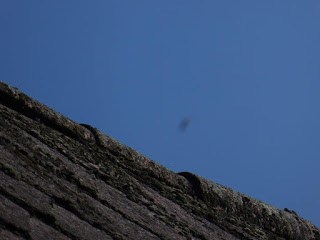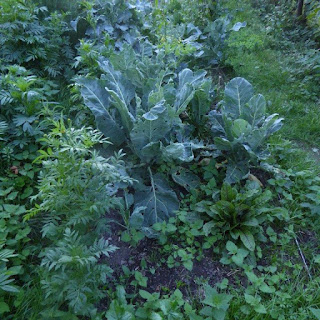These questions have been rumbling in our
heads for quite some time. It started this summer with our only rabbit Candy. She was increasingly difficult to handle, and ready to bite us if we wanted to
catch her in her out door cage and bring her into the stables at night.
Candy clearly needed a friend. Maybe. But the family rules were also quite clear – we did
not want to suddenly have several little rabbits, that we needed to sell or, even "worse", to eat. According to wise people it is best for rabbits to have a friend, and
preferably a sister or a brother, whom the rabbit knows from the beginning.
 |
| Candy in the straw - almost still |
When reading on the web it became clear that putting two rabbits of different
backgrounds together was not an easy thing. They may hate each other for the
rest of their lives, if both of them were dominant, and one did not give in.
After some search I found a rabbit breeder who seemed to care in a very good
way for her rabbits, and needed to sell a male rabbit. When I called her up she
was very clear in that this rabbit needed to be off the market as a male. He
needed to be castrated, because she had used him for breeding, and one of his
off-springs had developed some physical problems. On the good side was that
this little rabbit was a happy easy going lad with a very nice temperament. Maybe
this could help our Candy to be a more easy rabbit too.
Now, finally, some months later, we can really see a difference! We have two happy rabbits that every morning and every evening jump out of their cages to play, run around and have fun in the big horsebox were they live now in the winter. Little "Do It" (the male) has very nicely accepted to have Candy as a friend, and Candy is still a bit puzzled over Do Its easy temperament. But she is so much easier to handle now!
 |
| Exploring |
When then the kittens moved in this autumn,
we really took care in the beginning never to leave rabbits and cats alone. Our
little cat Tass has always been careful with the rabbits, but early on we saw
the big cat trying to play in a cat way with Candy. He would sit behind a
corner, and when Candy passed he quickly stuck out his paw to tap her. Not
acceptable!
But after some training together (encouraging him to be careful
with paws and claws) Candy started to try to play with him. She would suddenly jump
towards him. And wow, did he move quickly to a more secure place!
Now it is nice to see that the cats always
come into the rabbit-box when the rabbits are loose. Quite often they say hello to
eachother, sniffing, and several times we have seen the cats carefully lick the rabbits.
And the rabbits come close, close to the cats for some affection.
 |
| Tass in Cecilias lap, checking out Do It. We still supevise the encounters a bit when needed. |
One night Candy managed to escape from her
cage, and when we came out in the morning we saw a happy rabbit with two cats.
They should be enemies, but they are not. And that feels really nice!
It would be nice to have a picture of all
four together but that is still impossible. They are all 4 very different in
character, and none of them are wanting to understand what it means to sit
still. However, that is good. I hope they continue to be natural animals with their
instincts still intact to some degree.
The tricky thing now is to teach the cats to
actually understand that the rats, however, are there for them to catch. Since
the cats came the rats has basically disappeared over night, but they are still
living there somewhere. And we do not know who is eating all the cat food each
night - every morning the bowls are totally empty….











































